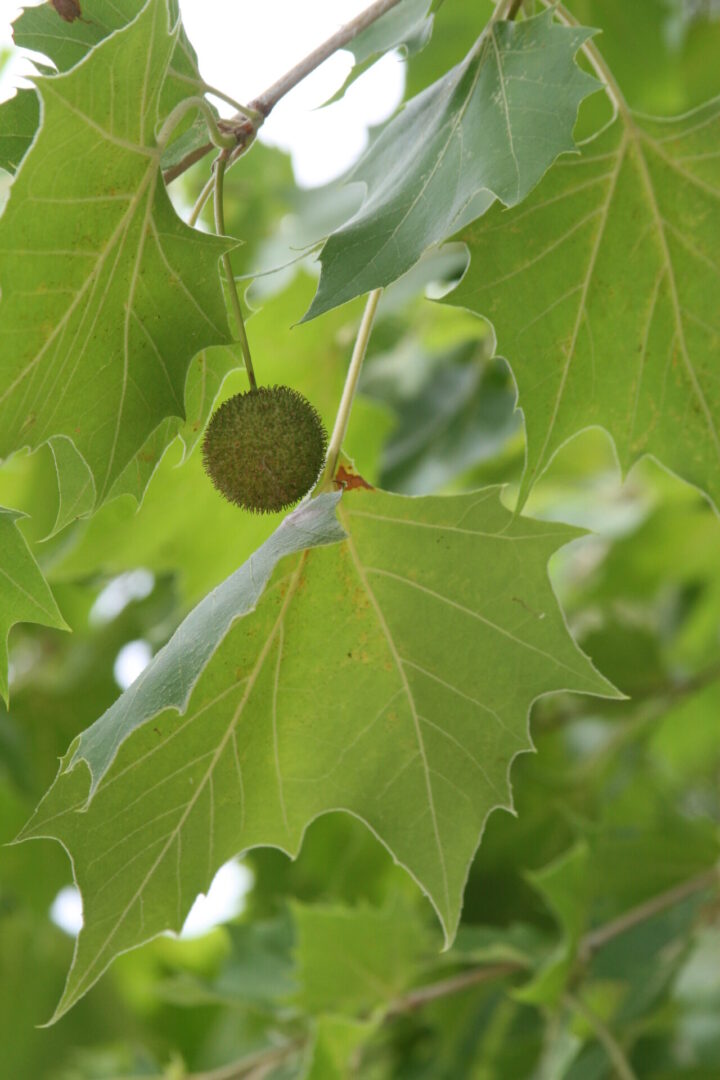Sycamore trees stand like tall sentinels lining sections of Penns, Spring and Bald Eagle creeks — protecting their banks from erosion, shading the stream and providing cover for wild brown trout.
In fact, stately sycamores guard all of Pennsylvania’s rivers and larger streams. Sycamores have been protecting streams for a long time. Fossil records indicate that they are a very old genus, once having been more geographically widespread than they are now.
Today, sycamore’s range extends across the eastern United States, south to Alabama and Georgia and north to southern New York and southern New England. In Pennsylvania and New York, they are primarily found growing along rivers, but to the south, sycamore can be a forest tree.
The identification of sycamore is obvious with or without the presence of the tree’s leaves. Sycamore bark flakes off in irregularly shaped patches that create a camouflage-like pattern of tan, olive and silver on large branches and the upper trunk. The trunks are very visible in the winter.
Large 6- to 8-inch diameter maple-like leaves cover the sycamore. Each leaf has three prominent lobes. And a coarse texture and is somewhat hairy below. While a brief glance at the leaves might indicate a maple, students of dendrology will quickly realize that it is not a maple because it doesn’t have oppositely arranged leaves and there are no winged seeds — both maple traits.
Sycamores have other unique features. The base of each leaf’s stalk, or petiole, is cone-shaped. Under the hollow cone you’ll find next year’s leaf bud. Sycamore twigs have a zig-zag pattern.
Sycamore fruits, called buttonballs, are rough-textured spheres nearly the size of golf balls. Each buttonball hangs singly from a long stalk and is actually composed of many smaller, seed-containing fruits. Wind and water disperse the seeds. Festively painted buttonballs can be used as homemade holiday ornaments.
Although the seeds are eaten by goldfinches and purple finches, the seeds have little value as wildlife food. Sycamore’s greatest value to wildlife is the many homes that it provides. It is not unusual to catch trout, smallmouth bass or pickerel under its massive bank-protecting root system. Sycamores often become hollow, creating natural cavities for owls, squirrels, wood ducks, raccoons and many other riparian species.
The wood of sycamore is used in inexpensive furniture, crates, boxes, particle board, railroad ties and for paper pulp. Because it resists splitting and doesn’t impart a flavor to food, it is also used to make cutting boards. It is not considered a good firewood.
According to former Centre County author Charles Fergus in “The Trees of Pennsylvania and the Northeast,” the sycamore is “the most massive tree in eastern North America.” They are long-lived, up to 600 years, with some reaching trunk diameters of over 10 feet and heights over 150 feet. The oldest and largest sycamore in Pennsylvania is believed to be a massive tree in Chester Springs, Chester County — over 400 years old.
Sycamore (Platanus occidentalis) is also known as buttonwood because of its buttonballs, as well as the American planetree after its Old World counterpart and close relative, the Oriental planetree (Platanus orientalis). London planetrees are a hybrid of the other two species.



